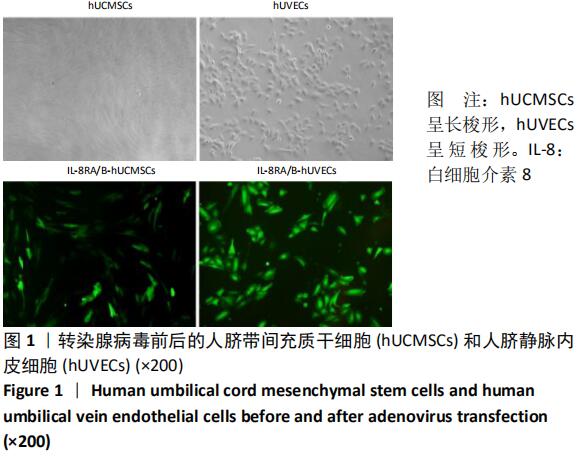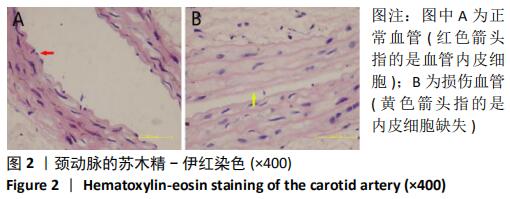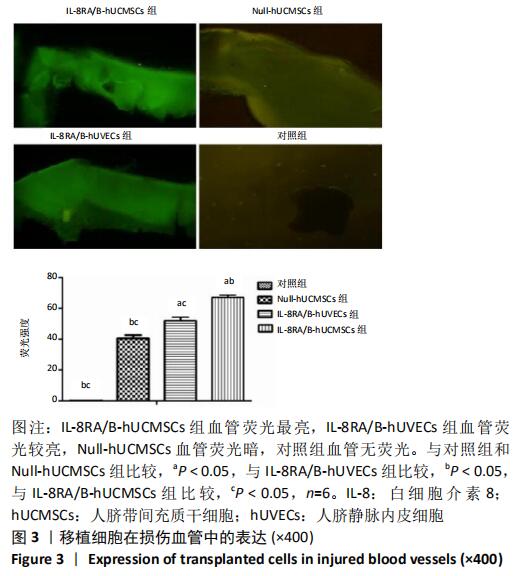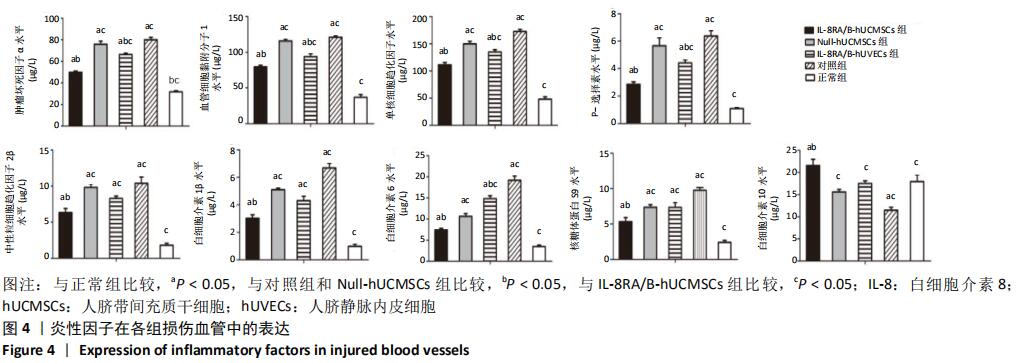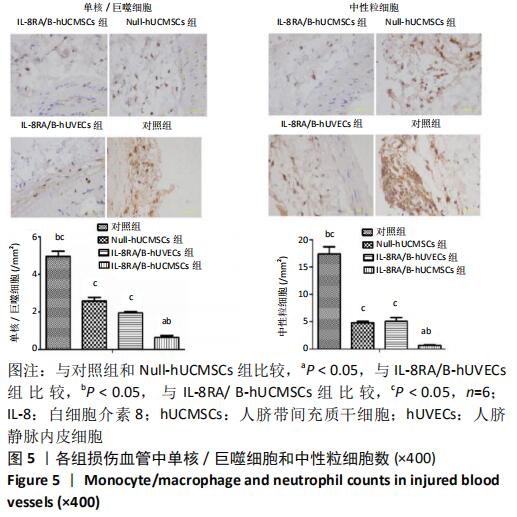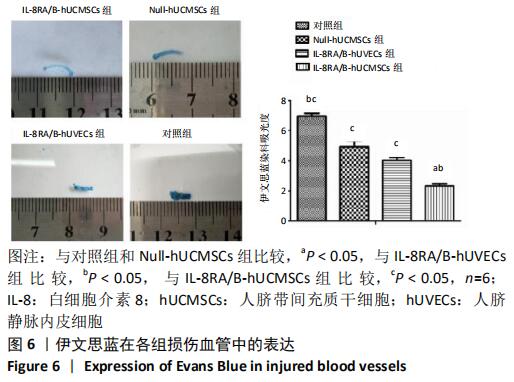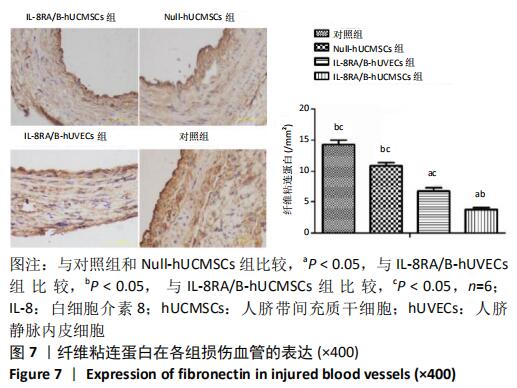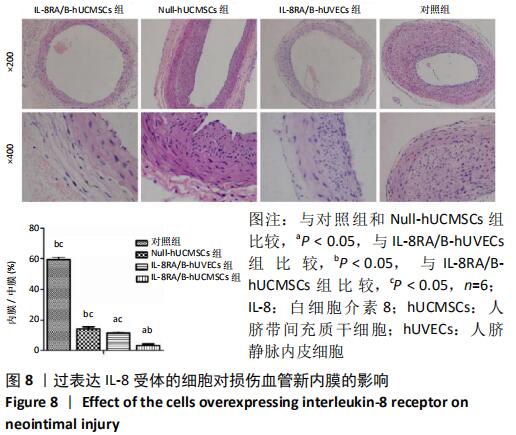中国组织工程研究 ›› 2021, Vol. 25 ›› Issue (1): 61-66.doi: 10.3969/j.issn.2095-4344.2124
• 脐带脐血干细胞 umbilical cord blood stem cells • 上一篇 下一篇
人脐带间充质干细胞过表达白细胞介素8受体可抑制炎症反应和促进血管修复
朱兵兵,何海斌,邓江华,王文强,慕晓玲
- 石河子大学医学院,新疆维吾尔自治区石河子市 832000
Human umbilical cord mesenchymal stem cells overexpressing interleukin 8 receptor inhibit inflammation and promote vascular repair
Zhu Bingbing, He Haibin, Deng Jianghua, Wang Wenqiang, Mu Xiaoling
- School of Medicine, Shihezi University, Shihezi 832000, Xinjiang Uygur Autonomous Region, China
摘要:
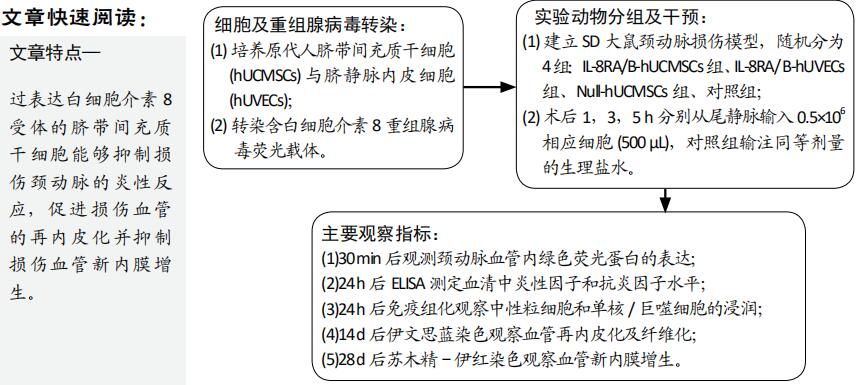
文题释义:
脐带间充质干细胞:具有自我更新和多向分化潜能,免受异体移植排斥反应,通过旁分泌和自分泌作用释放多种生物活性因子,抑制炎症反应,进行免疫调节,促进缺血组织的再生和修复。
白细胞介素8受体:存在于多种细胞膜表面,包括内皮细胞、上皮细胞、单核细胞、T淋巴细胞、中性粒细胞和成纤维细胞等多种细胞,当球囊损伤颈动脉后释放大量白细胞介素8,白细胞介素8受体能够与白细胞介素8结合,继而产生一系列生物学反应。
摘要
背景:血管损伤是球囊扩张术后常见的并发症,脐带间充质干细胞的发展为治疗血管损伤提供了新方法。
目的:探讨转染白细胞介素8受体(IL-8RA/B)腺病毒的人脐带间充质干细胞(human umbilical cord mesenchymal stem cells,hUCMSCs)修复损伤血管的机制。
方法:培养原代人脐带间充质干细胞与脐静脉内皮细胞,转染含白细胞介素8重组腺病毒荧光载体。建立大鼠颈动脉损伤模型,将SD大鼠随机分为4组:IL-8RA/B-hUCMSCs组、IL-8RA/B-hUVECs组、Null-hUCMSCs组、对照组,手术后1,3,5 h分别从尾静脉输入0.5×106相应细胞(500 μL),对照组输注同等剂量的生理盐水,30 min后取颈动脉血管,观测绿色荧光蛋白的表达;24 h后采用ELISA测定血清中炎性因子和抗炎因子水平;24 h后采用免疫组化观察中性粒细胞和单核/巨噬细胞的浸润;14 d后伊文思蓝染色观察血管再内皮化及纤维化;28 d后采用苏木精-伊红染色观察血管新内膜增生。
结果与结论:①移植细胞后30 min,观察到损伤血管内膜有绿色荧光蛋白的表达,IL-8RA/B-hUCMSCs组荧光表达量高于其他3组;②移植细胞后24 h,IL-8RA/B-hUCMSCs组血清中炎性因子水平明显低于其他3组,而抗炎因子白细胞介素10水平高于其他3组(P < 0.05),并且IL-8RA/B-hUCMSCs 组炎性细胞浸润明显减少;③移植细胞后14 d,过表达白细胞介素8受体的hUCMSCs促进损伤血管再内皮化,减少血管纤维化;④移植细胞后28 d,IL-8RA/B-hUCMSCs明显减少损伤血管新内膜增生;⑤结果表明,白细胞介素8受体提高hUCMSCs的靶向归巢能力,使hUCMSCs能定向迁移至血管损伤部位,抑制炎症,促进血管再内皮化,减少新内膜增生,促进血管修复。
ORCID:0000-0003-3713-7468(朱兵兵)
中国组织工程研究杂志出版内容重点:干细胞;骨髓干细胞;造血干细胞;脂肪干细胞;肿瘤干细胞;胚胎干细胞;脐带脐血干细胞;干细胞诱导;干细胞分化;组织工程
中图分类号:
